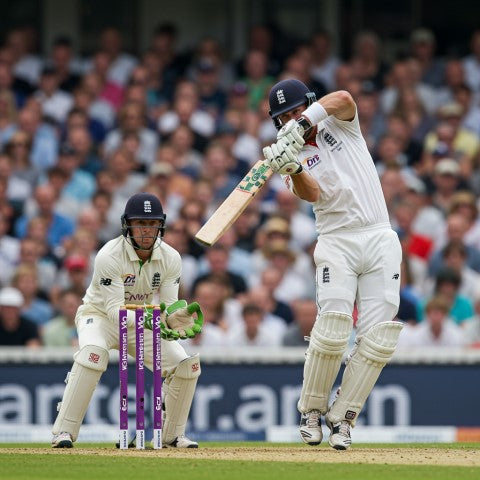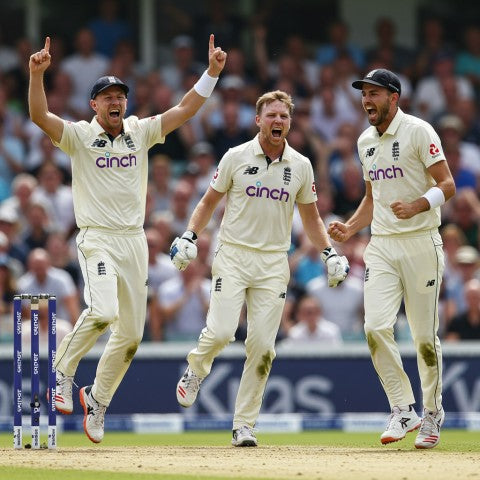Why the Orange Cap Doesn’t Mean Much Anymore

The Orange Cap is one of the most visible awards in T20 cricket. It is given to the player who scores the most runs during a tournament, most notably in the Indian Premier League (IPL). Introduced in 2008, it quickly became a popular feature, with fans keeping a close eye on the leaderboard and celebrating the players who topped the charts.
But in recent seasons, many cricket experts, players, and fans have begun to question the importance of the Orange Cap. Does it really reflect the most valuable batter? Or is it a misleading symbol that rewards volume over true impact?
In this article, we explore why the Orange Cap doesn’t mean much anymore. We look at how the T20 format has changed, why context matters more than pure numbers, and what statistics really define a world-class T20 innings.
The Idea Behind the Orange Cap
The Orange Cap was designed to reward consistency and run-scoring ability. It made sense in the early days of the IPL. The format was new, and the cap gave fans a simple way to follow the performance of star players.
The batter with the most runs in the competition would wear the Orange Cap during matches. This meant fans could instantly recognise the top scorer when watching games. It was an effective marketing tool and became a visual marker of success.
In the early years, some of the biggest names in the sport wore the cap — Shaun Marsh, Matthew Hayden, Chris Gayle, David Warner, and Virat Kohli among them. These players were not only scoring heavily, but also playing crucial roles in their teams’ success.
However, as T20 cricket matured, it became clear that raw runs were only one part of the story.
T20 Batting Is No Longer About Volume Alone
Cricket has always been a game of numbers, but T20 changed the way those numbers are interpreted. In the shortest format, scoring runs is still important, but how you score them matters just as much — and sometimes more.
Strike rate matters
In a 20-over match, every ball counts. Scoring 60 runs from 40 balls may seem like a strong performance, but if a batter uses too many deliveries without accelerating, it can put pressure on the rest of the team.
By contrast, a batter who scores 30 from 12 balls can completely shift the momentum of a game. Even if they do not top the run charts, their impact may be far greater.
Context matters
Not all runs are equal. Scoring quick runs in the powerplay against a quality bowling attack is more valuable than scoring slowly on a flat pitch when chasing a low total.
The Orange Cap does not take context into account. It rewards total runs, regardless of whether those runs came in high-pressure situations or in dead rubbers with nothing at stake.
The Orange Cap Favors Top-Order Batters
A major flaw in the Orange Cap system is that it strongly favours players who bat in the top three. These players have the best chance to face more balls and build large innings. Middle-order players and finishers often play shorter innings and face fewer deliveries, limiting their chances of winning the cap.
This means that explosive players like Andre Russell, Shimron Hetmyer, or Nicholas Pooran — who regularly win matches for their teams with short, high-impact knocks — rarely feature in the Orange Cap conversation.
The award effectively ignores one of the most important roles in T20 cricket: the finisher. These are the players who walk in when the pressure is highest and are expected to hit boundaries from ball one.
Winners Don't Always Help Their Teams Win
There is little evidence to show that the Orange Cap winner contributes to team success. In many IPL seasons, the top run-scorer has played for a team that did not even reach the playoffs.
Take KL Rahul, for example. He has worn the Orange Cap more than once, with impressive totals across full seasons. But his teams have often struggled. Critics argue that while his numbers look good on paper, his strike rate and approach have not always helped his side win games.
On the other hand, teams like Mumbai Indians or Chennai Super Kings have won titles without having a player near the top of the Orange Cap list. Instead of relying on one high-volume batter, they have spread their contributions across the line-up and prioritised match-winning performances over personal milestones.
The Cap Is Often a Marketing Tool
It is impossible to ignore the commercial side of cricket. The Orange Cap looks good on screen. It gives TV presenters and commentators an easy storyline to follow. It also provides brands with a chance to associate with individual success.
From a business point of view, it works. From a cricket point of view, it is flawed.
The focus on total runs encourages a narrative that may not reflect true performance. A batter who scores heavily in low-stakes games may wear the Orange Cap, while a player who delivers under pressure and leads their team to victories gets less attention.
Fans are more knowledgeable now. They look beyond the headlines and understand strike rates, economy rates, and match situations. The Orange Cap, in its current form, does not keep up with this level of analysis.
The Evolution of the Format
T20 cricket has changed rapidly. Early in the IPL, 150 was a competitive score. Now, teams regularly chase 200 with ease. Boundaries are shorter, bats are stronger, and bowlers have fewer tools to control the game.
In this environment, scoring 500 or 600 runs across a season is no longer the feat it once was. What matters now is whether those runs helped win matches, turned games around, or kept teams alive in key situations.
Many players now focus on their roles rather than chasing big totals. A power-hitter may be asked to bat for only two overs. A pinch hitter might be told to go hard and get out if needed. These roles are crucial, yet they are invisible to the Orange Cap leaderboard.
Should the Orange Cap Be Replaced or Updated?
It might be time to rethink the Orange Cap altogether. Here are some ideas that could replace or complement the award:
1. Most Valuable Batter Index
This award could be based on a combination of factors — total runs, strike rate, pressure situations, and match outcomes. A player who scores 350 runs at a strike rate of 180 in winning causes might rank higher than someone who scores 600 runs at a strike rate of 125 in losing causes.
2. Best Finisher Award
This could highlight players who regularly deliver at the death. They may not score the most runs overall, but their contributions often come in the toughest moments of a game.
3. Impact Player of the Season
Similar to how football has a Player of the Match or Player of the Season award, this could focus on the number of match-winning innings or the net impact of a player's performance across the tournament.
The Role of Analytics
Franchises now use detailed data to assess players. They look at batting impact per 100 balls, boundary percentage, dot ball avoidance, and performance under pressure. These insights matter more than just a total run tally.
The Orange Cap, however, is a static measure. It belongs to a time when cricket analysis was basic and fans were not exposed to deeper metrics.
Modern cricket followers expect better. They want awards that reflect real value, not just easy statistics.
What Do the Players Think?
Many players enjoy the recognition that comes with the Orange Cap, but few see it as their main goal. Most professional cricketers now focus on contributing to team victories. They know that a quick-fire 25 or a last-ball six may matter more than a slow fifty.
Players are also aware that too much focus on personal milestones can hurt the team. Playing for the Orange Cap may encourage batters to bat more cautiously, chase runs late in the season, or avoid taking risks that could benefit the team.
The best players strike a balance between personal performance and team goals. Awards should recognise and reward that balance.
Final Thoughts: Why the Orange Cap Doesn't Mean Much Anymore
The Orange Cap was a great idea when it was first introduced. It gave fans a way to follow star batters and rewarded consistency over a long season.
But cricket has changed. T20 is now a format where moments matter more than milestones. A batter's strike rate, role, and timing often outweigh their total runs.
The Orange Cap still has some value as a marketing tool and as a reward for consistent scoring. But it no longer reflects who the most valuable player truly is. It favours top-order players, ignores context, and overlooks the contributions of finishers, all-rounders, and those who step up in clutch situations.
If cricket is serious about recognising impact and rewarding match-winners, it is time to rethink how individual success is measured. The Orange Cap, as it stands, does not tell the full story.
The game has evolved. The awards must evolve too.





Leave a comment